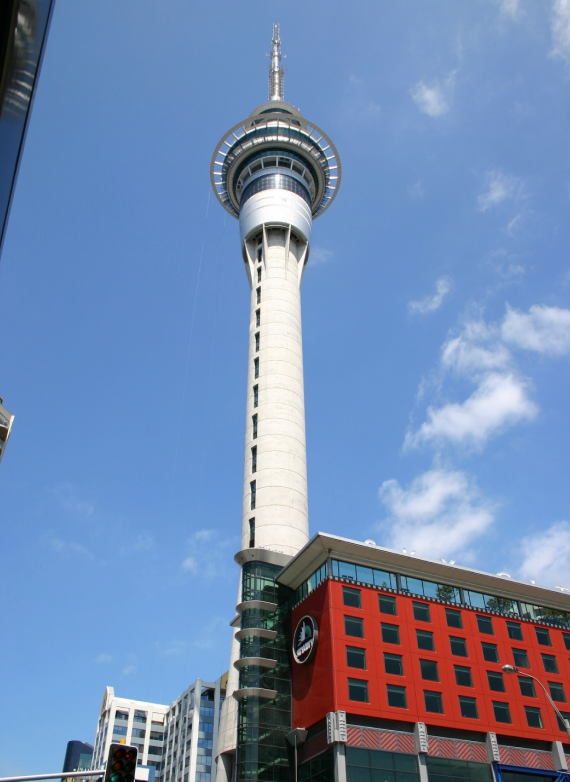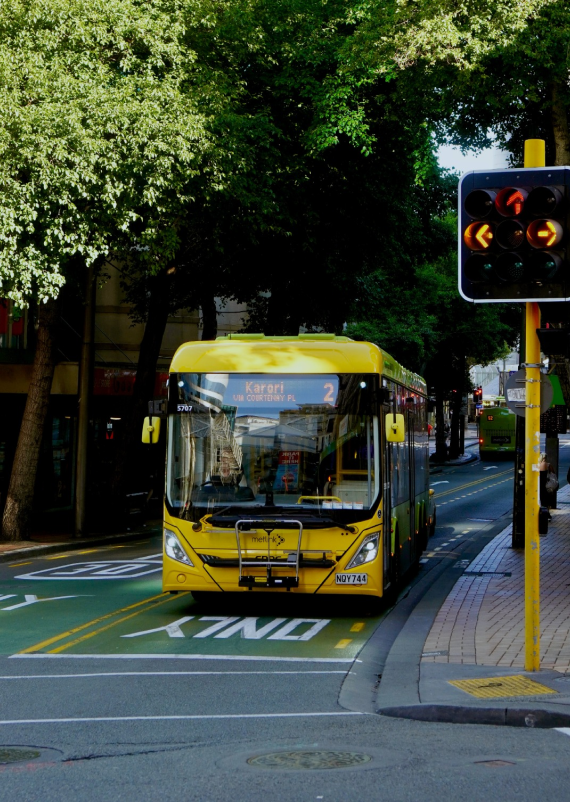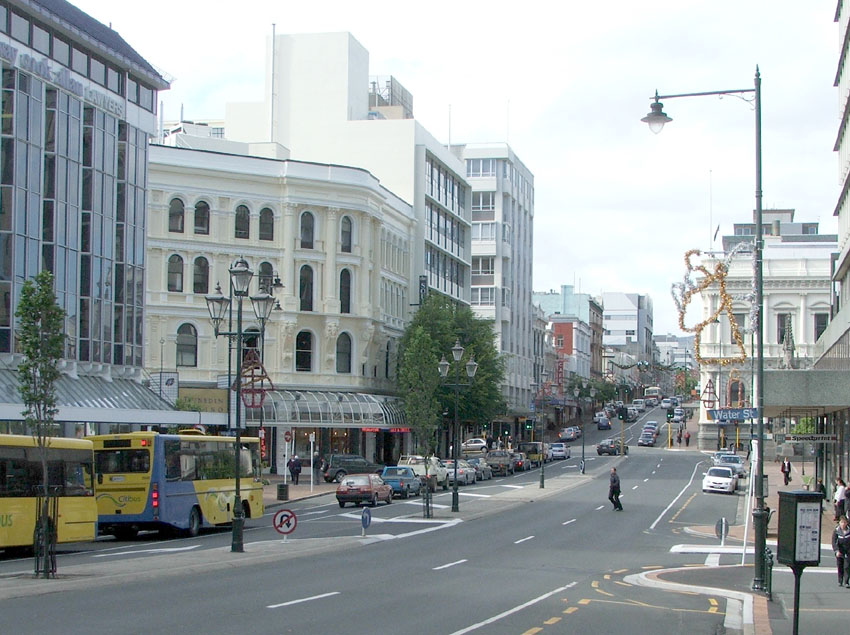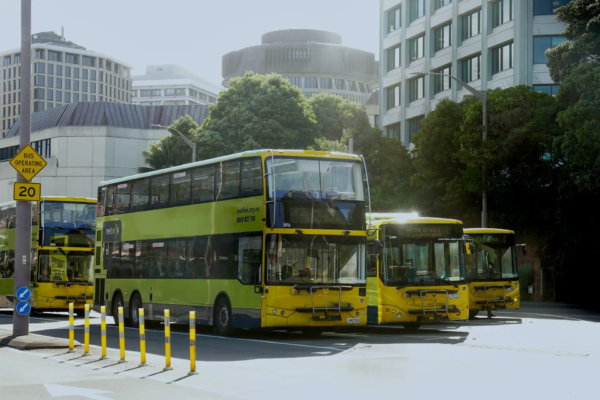10 Congestion pricing
10.0.1 Description
Congestion pricing uses market power to reduce the negative externality associated with traffic congestion during (typical) peak hours. It works by incentivising a shift in transport mode during peak hours or by making people shift their time of travel to outside the charging period. It is estimated that traffic congestion costs the New Zealand economy roughly $1.25 billion per year (Waka Kotahi, 2014). By removing a small portion of traffic congestion through congestion pricing the roads can flow much more efficiently and there will be a corresponding reduction in emissions, helping decrease the deadweight loss associated with traffic congestion. There are various approaches globally to congestion pricing that can be grouped in to two broad categories: projects involving tolls; and projects not involving tolls (US Department of Transportation, 2022). An example of a congestion pricing strategy is in place in London. This consist of a fixed £15 daily charge if you drive within the congestion charge zone between 7:00am and 6:00pm on weekdays or between 12:00pm and 6:00pm on weekends and public holidays, excluding Christmas and New Year’s Day (Transport for London, n.d.). Stockholm and Gothenburg in Sweden both have congestion pricing schemes in place, as does Singapore, where the scheme has evolved over time from its introduction in the 1970s. Dubai also has a scheme to manage traffic on its main highways.
New York State lawmakers approved a congestion pricing plan that will toll drivers that enter certain parts of Manhattan during peak travel times. It is still yet to implement this congestion pricing plan and has been slowed by significant backlash from both Manhattan residents and residents from outside Manhattan, but some experts estimate it could be introduced by the end of 2023. This will be the first congestion pricing plan of this kind to be implemented in the US and is being introduced to help decrease traffic but primarily to raise money for the Metropolitan Transportation Authority (MTA). MTA hopes to raise over $1billion USD annually from the congestion pricing scheme to fund other infrastructure projects around the city.
10.0.2 Type of travel affected
Congestion pricing can affect all private and commercial vehicles but is dependent on the local policy that is implemented. For example, in Dubai it affects all vehicles except for the military, emergency vehicles, buses, or vehicles with disabled owners. In Singapore their congestion pricing scheme affect all motorcycles, cars, taxis, freight vehicles and buses with no exemptions.
10.0.3 How travel and emission effects, including long-run, can be measured and modelled
Travel impacts, and emissions can be predicted based on price elasticity models. By considering the impacts achieved by other jurisdictions that have implemented some form of congestion pricing, it can help identify what the effects of implementing a congestion pricing scheme might be here in New Zealand.
London’s congestion pricing was implemented in 2003 and congestion within the charging zone was quickly reduced by 20%. It is estimated that this helped drop CO2 emissions by 16% within the charging zone. However, congestion levels within London have now risen back to above pre-charge levels, in part due to increasing in demand for roads and the extension of the zone causing a larger area to be impacted by the congestion pricing (Waka Kotahi, 2014).
Stockholm introduced a congestion charge in 2007 after a successful 7-month trial and referendum which narrowly resulted in the implementation of a congestion charge. In 2006 public support for the congestion charge was roughly 36% but this quickly grew with how effective the congestion charge was and in 2011 70% of people supported the congestion charge. As a result of the congestion pricing, traffic has decreased by about 20% in the cordon zone and congestion has decreased by 30-50%. This has also resulted in inner city emissions dropping somewhere between 10% and 14% (Kassirer & Sharon Boddy, 2014).
10.0.4 Secondary impacts
As with any form of government taxation, when implemented it imposes a cost on the public. Government schemes are introduced with a clear goal, but this ultimately results in both positives and negatives for society. The positive externalities associated with congestion pricing include a reduction in emissions as their will be fewer cars on the roads and it will raise revenue for local and national governments. This can help offset some of the predicted loss in income for governments as we transition away from carbon emitting fuels that often incorporate a fuel tax (if not corrected for in other ways). It also makes drivers pay a higher proportion of the cost of driving as taxes like petrol taxes does not discriminate for where and when congestion is worst. By reducing the journey time for people travelling in vehicles it can help emergency services in getting to emergencies quicker, allowing them to provide their service more efficiently.
The negative externalities associated with a congestion charge include loss of business for firms within the charged area. With people less inclined to visit city centres where congestion prices would be implemented, due to the costs associated with travelling there now being higher, there may be a decline in people and spending in city centres. It also has the potential to create more inequality as congestion charges are generally regressive as it takes a higher portion of income from the more financially vulnerable (Parks, 2019).
10.0.5 Key Information sources
Arnold, B., Smith, V. C., Doan, J. Q., Barry, R. N., Blakesley, J. L., DeCorla-Souza, P. T., Muriello, M. F., Murthy, G. N., Rubstello, P. K., & Thompson, N. A. (2010). Reducing Congestion and Funding Transportation Using Road Pricing in Europe and Singapore (p. 72).
Bordoff, J. E., & Noel, P. J. (2008). The Impact of Pay-As-You-Drive Auto Insurance in California (p. 19). The Brookings Institution.
Cavallaro, F., Giaretta, F., & Nocera, S. (2018). The potential of road pricing schemes to reduce carbon emissions. Transport Policy, 67, 85–92. https://doi.org/10.1016/j.tranpol.2017.03.006
Extensive list of responses to congestion charges, distance-based road charges and pay-as-you-drive cases.
Croci, E. (2016). Urban Road Pricing: A Comparative Study on the Experiences of London, Stockholm and Milan. Transportation Research Procedia, 14, 253–262. https://doi.org/10.1016/j.trpro.2016.05.062
Eisses, S. (2009). The Distance-Based Charging Project in the Netherlands. 16th ITS World Congress and Exhibition on Intelligent Transport Systems and ServicesITS AmericaERTICOITS Japan. https://trid.trb.org/view/906510
Geurs, K. T., Haaijer, R., & Meurs, H. (2010). The Dutch national kilometre charge: Impacts on the Dutch car market and environment. 50th Congress of the European Regional Science Association: "Sustainable Regional Growth and Development in the Creative Knowledge Economy," Jonkoping, Sweden. https://www.econstor.eu/bitstream/10419/119180/1/ERSA2010_1438.pdf
Gille, J., Bv, E. N., & Gille, J. (n.d.). Road pricing: The case of the Netherlands. 7.
Kassirer, J., & Sharon Boddy. (2014). Stockholm Congestion Pricing. Retrieved from Tools of Change: https://toolsofchange.com/en/case-studies/detail/670#:~:text=Traffic%20decreased%20by%20about%2020,decreased%20by%2030%20%E2%80%93%2050%25.&text=Traffic%20decreased%20by%20about%2020%25%20across%20the%20toll%20cordon%2C%20or,the%20congestion%20period%20ea
Nelson, M., Pasterz, A., & Staniak, A. (2013). Pay-As-You-Drive insurance, Options for the University of Oregon. https://ppms.trec.pdx.edu/media/project_files/PAYD_Team_Project_Final_Paper_3-15-2013.pdf
Parks, H. (2019, May 29). Investigating the Impact of Congestion Pricing Around the World. Retrieved from Climate XChange: https://climate-xchange.org/2019/05/29/investigating-the-impact-of-congestion-pricing-around-the-world/
Proost, S. (2018). Reforming Private and Public Urban Transport Pricing [International Transport Forum Discussion Paper]. OECD Publishing. https://www.oecd-ilibrary.org/docserver/3567dda4-en.pdf?expires=1654220448&id=id&accname=guest&checksum=33E179C844C44C2ABB91CD48558A0F95
Transport for London. (n.d.). Congestion Charge. Retrieved from https://tfl.gov.uk/modes/driving/congestion-charge#:~:text=The%20Congestion%20Charge%20is%20a,by%20setting%20up%20Auto%20Pay.
US Department of Transportation . (2020, June 19). HOT Lanes, Cool Facts. Retrieved from Federal Highway Administration: https://ops.fhwa.dot.gov/publications/fhwahop12031/fhwahop12027/index.htm
US Department of Transportation. (2022, February 12). Congestion pricing. Retrieved from Federal Highway Administration: https://ops.fhwa.dot.gov/congestionpricing/cp_what_is.htm





























